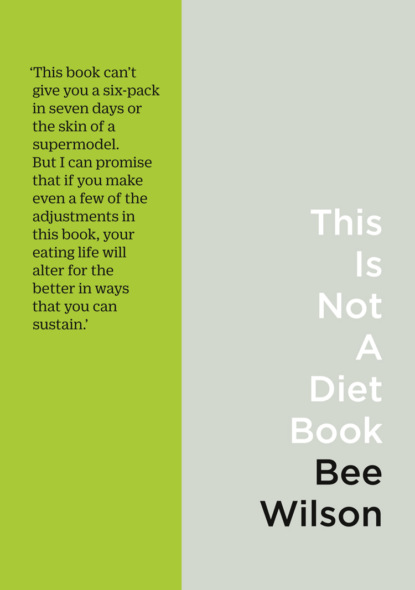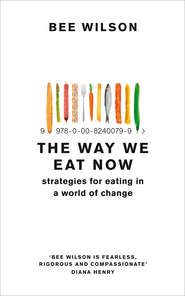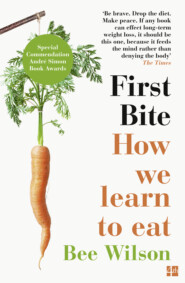По всем вопросам обращайтесь на: info@litportal.ru
(©) 2003-2024.
✖
This Is Not A Diet Book: A User’s Guide to Eating Well
Автор
Год написания книги
2019
Настройки чтения
Размер шрифта
Высота строк
Поля
But my new favourite involves toasted cumin seeds and currants and is loosely based on something I ate at a marvellous café in Portland, Oregon, called Maurice Luncheonette (the version there contained prunes). I’ve added torn chunks of garlicky toast, as a nod to the legendary chicken and bread salad in The Zuni Café Cookbook, and to make it filling enough for lunch.
If the word salad has bad connotations for you, do as food writer Sally Butcher does and call it a ‘salmagundi’ instead (an old name for a mixture of many ingredients). In fact, call it whatever you like.
Carrot and bread salad: a nourishing but cheap lunch
Serves 3
1 tablespoon currants
2 teaspoons apple cider vinegar (I like the one made by Raw Health)
2 tablespoons pumpkin seeds
2 teaspoons cumin seeds
2 tablespoons extra virgin olive oil
4 spring onions, chopped
750g carrots
3 generous slices sourdough bread
1 clove garlic
sea salt (preferably Maldon)* (#ulink_74c6c09d-2db6-554f-ab52-d430c0fcaad1)
20g flat-leaf parsley, chopped
* (#ulink_683396d2-9f25-5483-9cea-8286f46b34a8) I use Maldon sea salt, a teaspoon of which has half as much sodium as a teaspoon of free flowing fine salt, because it is less dense; in general, if you are using regular salt, you will only need half the amount.
Put the currants in a small bowl and pour over the vinegar. Heat up a wide large pan or skillet and toast the pumpkin seeds until some of them pop. Tip into a bowl. Add the cumin seeds to the pan for a couple of seconds until fragrant. Set them aside with the pumpkin seeds. Heat 1 tablespoon of the oil and soften the spring onions for a minute or two. Peel the carrots and trim off the ends. Using a food processor, cut half the carrots into wafer-thin slices and grate the other half. If you don’t have a food processor, grate half the carrots on a box grater and slice the others as thinly as you can, with a peeler or a knife. Meanwhile, toast the bread in the toaster, rub the cut clove of garlic all over it and drizzle the second tablespoon of oil over the slices. Sprinkle the toast with salt and cut or tear into 2cm chunks. Now mix all the ingredients together and season again with salt, to taste. Add more vinegar or a squeeze of lemon if you think it needs it. I like this with fish; but it’s a good lunch all by itself.
12
Our lives would be more balanced if we spent less time worrying about our weight and more time planning what to cook for dinner. How much better we would eat if we took all those hours of unhappy weight-obsessing and diverted them to dreaming up different uses for herbs (you haven’t lived until you’ve tried a deep-fried sage leaf).
13
A word about guilty pleasures: there is no such thing (and don’t get me started on ‘guilt-free’ snacks). If it’s making you feel guilty, it isn’t a pleasure. And pleasure in eating is nothing to feel ashamed of, whatever your size. One of the saddest things about our eating today is the way we have been conditioned to sabotage our own joys. Shame never made a person eat better. When you think that eating cake is a cause for shame, you are likely to eat it in secret and in much larger quantities (I write from experience). Give yourself permission to eat such things in limited quantities but without guilt and you may discover, to your surprise, that one occasional slice, eaten with gusto and joy, is enough.
14
If you want to change your diet long-term – and lose weight, if you need to – change your tastes. I recently met someone who had lost nearly 100 pounds over the course of a year. ‘How has it been?’ I asked her, half expecting her to say, as so many dieters do, that it had been torture. ‘Oh, it’s been marvellous,’ she said. ‘I’m having a wonderful time changing my palate.’ This may be an extreme reaction (and you might not share it). But long-term studies confirm that people who successfully lose a lot of weight without regaining it – these people are known as ‘maintainers’ – tend to say their appetites have permanently changed. These people seem to actually enjoy their food more than the dieters who relapse. The relapsers feel that when ‘on a diet’ they should forbid themselves anything they enjoy. By contrast, the maintainers never completely restrict their old comfort foods, but as time went by, they changed the way they cook, making smaller portions and eating more vegetables and grains. But the real change is to themselves, because this is how they now want to eat.
15
We all start from a different place with food. You didn’t choose the genetic cards you were handed when it comes to the way you eat. Maybe you are a supertaster, someone for whom bitter flavours taste incredibly strong. Or maybe you were born with genes that predisposed you to anorexia or pickiness. There is a strong genetic component to many eating disorders; and also to obesity. Scientists working with twins have found that, eating a very similar diet, one twin may gain weight while the other doesn’t, purely due to differences in their gut microbes. Life is unfair. But wherever we start, it’s possible to develop new tastes and new habits.
16
You are not doomed to eat badly. The overall pattern of how we eat is governed more by environment than biology. This helps explain why we are in such a mess with our diets now because no one has ever had to learn how to eat in such a toxic food world as the one we now inhabit. Every day, we are bombarded with confusing messages that tell us it is normal to eat in dysfunctional ways. It sometimes feels as if our appetites were not our own. But the good news is that, if our tastes are largely formed by environment, then it’s also possible to change them, under the right circumstances. There is nothing innate in your physiology that says you will always prefer hamburgers to ratatouille.
17
If food habits are learned, they can also be relearned. Most of us have a firm belief that our likes and dislikes are part of our personality, something we are powerless to change. Social media only makes it worse, because we project our food tastes to the world. We announce: I am a chocoholic, a carnivore or a cheese-addict, and it becomes a badge of honour, a deep part of who we are. Entire relationships have been founded on a mutual loathing for liquorice. But imagine you were adopted at birth by liquorice-loving parents who lived in a remote village in a far-flung country. Your tastes would be quite different from the ones you ended up with. Even now, you can adjust your preferences. The only downside is that you may have to change your Facebook status.
18
Nothing tastes good when it’s eaten in a spirit of coercion. The secret is – as far as possible – to make healthy food and pleasurable food one and the same.
Our culture tends to put health food and enjoyable food in two separate boxes. Health food is ‘eat up your greens’ and puritanism. When I used to go on diets, I felt ravenous before I’d even eaten the first breakfast because I was ‘on a diet’. The last thing I wanted to eat was whatever the particular diet was advising. It didn’t have much to do with the food itself. It was a state of mind.
I overheard a woman in a café chatting to a friend over weekend lattes and eggs Benedict about her attempts to adopt a healthier lifestyle. She announced that, on Monday, she was going to buy kale and make green juice. ‘The trouble is, I buy the kale, it sits in the fridge, I throw it away. I buy it again, throw it away again.’ I related to what she was saying. When you think that kale is something you need to swallow as a form of self-improvement, it tastes vile.
But what if you properly liked kale? Then, it would be easy to eat. After buying the kale, the next step is to try the kale. Offer it kindly. Coax yourself with small morsels. Pair it with other foods that you like (the dark mineral taste goes well with chorizo, or as a purée stirred through pasta). Or crisp it in the oven with oil and salt, as if it were chips. One day, you may find yourself eating a plate of kale with bright oil and garlic and two poached eggs, not because you feel you should, or that it will make you a better person, but because you positively crave it, especially black kale (cavolo nero) which is not as scratchy as curly kale. Then again, you may never warm up to kale and its stalky charms. No matter. There are always other foods.
19
Try to start thinking of feeding yourself as a good parent feeds a child: with love, with variety, but also with limits.
As adults, so many of us feed ourselves in ways that are alternately neglectful and overly strict: first, we let ourselves eat a whole family-size bag of crisps with a bucket-sized glass of wine but then we deny ourselves lunch. Next time you sit down to eat, imagine you are an ideal parent feeding a beloved child. Wouldn’t it be nice if you could offer yourself food in a warm, structured, no-fuss kind of way? You wouldn’t punish yourself with crash diets but nor would you allow yourself too much junk. Your priority when choosing food would be to see yourself well nourished and you’d choose meals to keep your mood on an even keel. You’d want yourself to enjoy eating. The fridge would be stocked with good food and you would trust yourself to choose wisely from its contents.
20
Stop being cruel to yourself about eating. You are not ‘naughty’ because you broke your stupid diet and ate some pasta. You are a human body needing to be fed. We should be far less judgemental about ourselves and our eating habits and far more judgemental about the diets that make us feel like losers for preferring a bowlful of comforting tagliatelle to one of spiralized courgette.
‘Courgetti’ – an approximation of spaghetti made from raw ribbons of courgette – is an example of how crazy and extreme our ideas of diet have become. If you want to spiralize vegetables, be my guest. The telephone-wire texture of spiralized vegetables has its appeal, and it’s fun to watch the strands tumble from the spiralizer. But pasta it is not. Replacing your usual plate of refined white pasta with a pile of vegetable mush will not make you ‘glow’. It will make you hungry, and then you start to feel like a failure when you crave a huge bowl of cereal an hour after dinner. Instead of giving you the absurd choice of courgettes or pasta, a kinder diet might lead you towards courgettes and pasta, but with more vegetables and fewer noodles.
Diet books are always nagging you to eat wholewheat pasta, which is OK once in a while (there’s a Nigella recipe for spelt pasta with anchovies that I love) but if you have it too often it can feel like chewing on cardboard. Do as the Italians do and enjoy refined white durum-wheat pasta but in smaller quantities. We are doing pasta a disservice when we dismiss it as a beige ‘carb’ with no redeeming features. An 85g serving of De Cecco egg pappardelle contains 11g of protein. Even non-egg dried pasta contains at least 8g of protein per portion, depending on portion size and brand.
When I cook pasta and vegetables now, I measure the pasta sparingly and add quantities of greens that I would once have thought excessive. I’ve come to prefer it that way, assuming the vegetables are well-seasoned and treated with care. Sometimes, at home, we eat two whole heads of cauliflower between five, broken up and sautéed in oil with shallots until brown and crispy, then tossed with farfalle, olives and toasted breadcrumbs. Other times, I make penne with overcooked broccoli, a deeply comforting recipe borrowed from Jacob Kenedy’s The Geometry of Pasta
Вы ознакомились с фрагментом книги.
Приобретайте полный текст книги у нашего партнера:
Приобретайте полный текст книги у нашего партнера:







